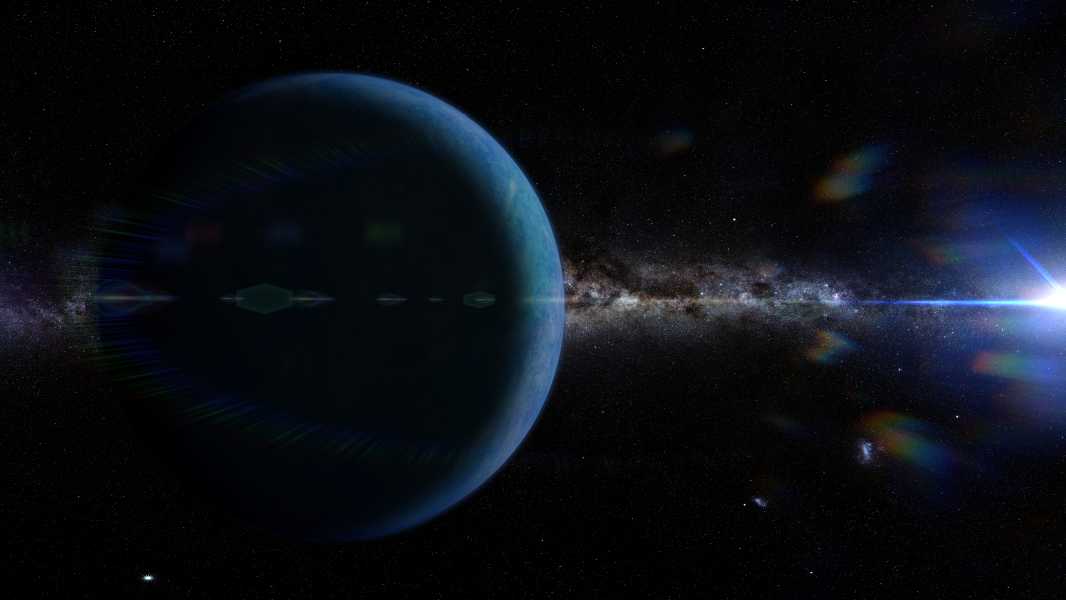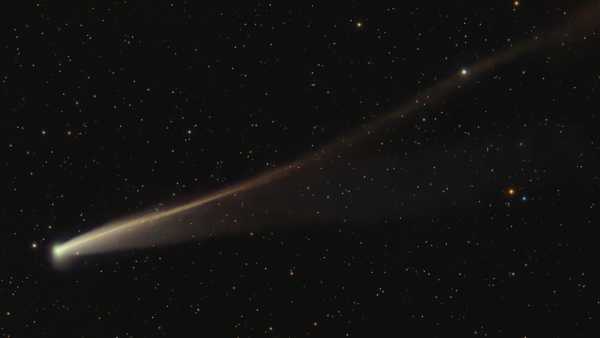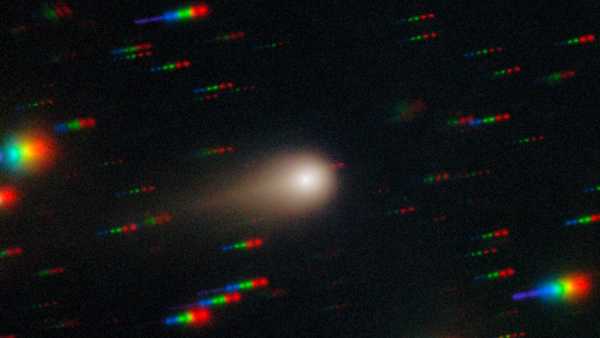
The presence of Planet Nine could explain the unusual orbits of a number of objects in the Kuiper Belt. (Image credit: Shutterstock)
Astronomers searching for a ninth planet in our solar system say they have discovered an “encouraging” candidate far beyond Neptune, according to a new preliminary study.
This could be humanity's first glimpse of the long-theorized Planet Nine, which — if it exists — is a vast, undiscovered world orbiting our sun in a distant orbit. However, the idea of Planet Nine remains controversial, and new discoveries are unlikely to change that.
The researchers identified this latest planet candidate by analyzing old satellite data. At this point, the candidate is just a blip in a few infrared images. But the blip appears to have moved in ways consistent with a large, distant planet.
“I was incredibly excited,” lead study author Terry Fan, a graduate student in astronomy at National Tsing Hua University in Taiwan, told Science magazine of the moment of discovery. “It was very inspiring.”
Fan and his colleagues submitted their results to the preprint server arXiv on April 24, and they have been accepted for publication in the journal Publications of the Astronomical Society of Australia. However, the preprint has raised some concerns.
Mike Brown, an astronomer at the California Institute of Technology who first proposed Planet Nine with a colleague in 2016, isn’t convinced that the infrared dots correspond to an elusive planet. Brown wasn’t involved in the study, but he calculated the orbit of the infrared signal and found that the object would be tilted about 120 degrees relative to the plane of the solar system, Science reports. That tilt is significantly higher than Planet Nine’s predicted tilt of about 15 to 20 degrees, and also implies that the object would orbit in the opposite direction to the known planets, which are roughly in the same plane.
The discrepancy “doesn't mean there's no planet, but it does indicate that it's not Planet Nine,” Brown told Science magazine. “I don't think this planet would have any of the impact on the solar system that we seem to be seeing.”
The predicted location of Planet Nine should explain the irregular orbits of some objects in the Kuiper Belt at the outer edges of our solar system. However, some researchers are not convinced that these orbits are caused by an undiscovered planet, and the scientific community as a whole is still waiting for direct observational evidence of Planet Nine.
If Planet Nine does exist, researchers believe it is significantly larger than Earth and orbits in an unusual orbit billions of miles from Neptune, the eighth and currently last planet in our solar system. Planet Nine's proposed orbit is so far from the Sun that it would be difficult for scientists on Earth to detect it, making it difficult to confirm or deny its existence.
The team behind the new study searched for Planet Nine candidates in the data archives of two decommissioned satellites: the 1983 Infrared Astronomy Satellite (IRAS) and the AKARI satellite, which operated from 2006 to 2011, Live Science's sister site Space.com reports. They looked for distant objects that moved slowly between data sets, as the putative Planet Nine would do if it orbited our sun.
After eliminating known objects from the data, the researchers focused on a limited list of candidates. They then analyzed images of these potential objects and ultimately identified “one good candidate” in the study. The candidate is a dot with similar colors and brightness in the two sets of images, suggesting that it is the same object captured by both satellites. According to the study
Sourse: www.livescience.com





